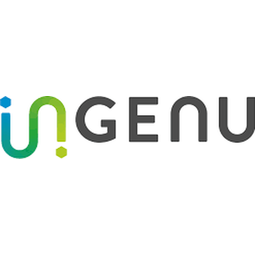.png)
技术
- 网络与连接 - 低功耗广域网
- 传感器 - 电表
适用行业
- 公用事业
适用功能
- 商业运营
用例
- 高级计量架构 (AMI)
客户
澳门蓬塔卡纳能源协会
关于客户
Consortio Energético Punta Cana Macau (CEPM) 是一家私营公用事业公司,在多米尼加共和国的蓬塔卡纳、巴瓦罗和 Bayahíbe 地区生产、传输、分配和商业化能源。向前
挑战
随着向消费者更有效地提供电力的努力增加,多米尼加共和国也面临着挑战。在这个新兴岛国,服务不达标、容量不足、停电频繁的现象屡见不鲜。然而,随着政府能源行业放松管制,多米尼加共和国希望 CEPM 等公司为其公民提供创新的能源解决方案。因此,CEPM 寻求找到一种可靠的高级计量基础设施 (AMI) 解决方案,该解决方案能够承受剧烈的电力波动并提供对其电网的远程监控和管理。此外,该公司正在推出一项预付费用电计划,该计划需要可靠的数据传输和双向通信能力。由于该国地形多样,覆盖范围也是一个问题。
解决方案
Ingenu 与 GE Digital Energy 合作,提供其强大的 RPMA 网络,使超过 24,000 个智能电表能够加速电力恢复并提高 CEPM 客户服务的可靠性。该解决方案在 CEPM 与其最终用户之间提供了强大的双向通信,提供了对能源运行和消耗的准确报告和监控。 RPMA 接入点作为电表和 CEPM 前端系统之间的通信设备,安装在战略位置以获得理想的射频性能,允许单个 RPMA 接入点为多达 20,000 个 GE 智能电表提供服务。由于基础设施投资有限,CEPM 能够以具有成本效益的方式提供能源服务,从而为客户节省了大量资金。
收集的数据
Energy Usage
运营影响

Case Study missing?
Start adding your own!
Register with your work email and create a new case study profile for your business.
相关案例.

Case Study
IoT Solutions for Smart City | Internet of Things Case Study
There were several challenges faced: It is challenging to build an appliance that can withstand a wide range of voltage fluctuations from as low at 90v to as high as 320v. Since the device would be installed in remote locations, its resilience was of paramount importance. The device would have to deal with poor network coverage and have the ability to store and re-transmit data if networks were not available, which is often the case in rural India. The device could store up to 30 days of data.

Case Study
Automation of the Oguz-Gabala-Baku water pipeline, Azerbaijan
The Oguz-Gabala-Baku water pipeline project dates back to plans from the 1970’s. Baku’s growth was historically driven by the booming oil industry and required the import of drinking water from outside of the city. Before the construction of the pipeline, some 60 percent of the city’s households received water for only a few hours daily. After completion of the project, 75 percent of the two million Baku residents are now served around the clock with potable water, based on World Health Organization (WHO) standards. The 262-kilometer pipeline requires no pumping station, but uses the altitude differences between the Caucasian mountains and the capital to supply 432,000 m³/d to the Ceyranbatan water reservoir. To the people of Baku, the pipeline is “the most important project not only in 2010, but of the last 20 years.”

Case Study
GPRS Mobile Network for Smart Metering
Around the world, the electricity supply industry is turning to ‘smart’ meters to lower costs, reduce emissions and improve the management of customer supplies. Smart meters collect detailed consumption information and using this feedback consumers can better understand their energy usage which in turn enables them to modify their consumption to save money and help to cut carbon emissions. A smart meter can be defined in many ways, but generally includes an element of two-way communication between the household meter and the utility provider to efficiently collect detailed energy usage data. Some implementations include consumer feedback beyond the energy bill to include online web data, SMS text messages or an information display in consumers’ premises. Providing a cost-effective, reliable communications mechanism is one of the most challenging aspects of a smart meter implementation. In New Zealand, the utilities have embraced smart metering and designed cost effective ways for it to be implemented. The New Zealand government has encouraged such a move to smart metering by ensuring the energy legislation is consistent with the delivery of benefits to the consumer while allowing innovation in this area. On the ground, AMS is a leader in the deployment of smart metering and associated services. Several of New Zealand’s energy retailers were looking for smart metering services for their residential and small business customers which will eventually account for over 500,000 meters when the multi-year national deployment program is concluded. To respond to these requirements, AMS needed to put together a solution that included data communications between each meter and the central data collection point and the solution proposed by Vodafone satisfied that requirement.

Case Study
NB-IoT connected smart meters to improve gas metering in Shenzhen
Shenzhen Gas has a large fleet of existing gas meters, which are installed in a variety of hard to reach locations, such as indoors and underground, meaning that existing communications networks have struggled to maintain connectivity with all meters. The meter success rate is low, data transmissions are so far unstable and power consumption is too high. Against this background, Shenzhen Gas, China Telecom, Huawei, and Goldcard have jointly trialed NB-IoT gas meters to try and solve some of the challenges that the industry faces with today’s smart gas meters.

Case Study
OneWireless Enabled Performance Guarantee Test
Tata Power's power generation equipment OEMs (M/s BHEL) is required to provide all of the instrumentation and measurement devices for conducting performance guarantee and performance evaluation tests. M/s BHEL faced a number of specific challenges in conducting PG tests: employing high-accuracy digital communications for instrumentation, shortening setup and dismantling time, reducing hardware required, making portable instrument setup, avoiding temporary cabling work and the material waste costs

Case Study
British Gas Modernizes its Operations with Innovative Smart Metering Deployment
The UK government has mandated that smart meters are rolled out as standard across Great Britain by end of 2020, and this roll-out is estimated to create £14 billion in net benefits to the UK in consumer energy savings and lower energy generation demand, according to the Oxford Economics report, “The Value of Smart Metering to Great Britain.” While smart-metering systems have been deployed in many countries, the roll-out in Great Britain is unique because it is led by energy retailers, who have responsibility for the Electricity and Gas meters. The decision to have a retailer-led roll out was made by DECC (Department of Energy and Climate Change) to improve customer experience and drive consumer benefits. It has also led to some unique system-level requirements to support the unique local regulatory model.



